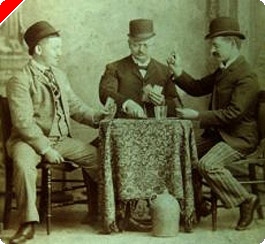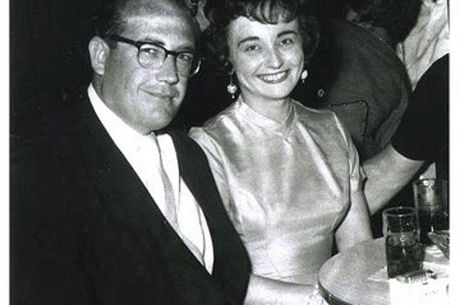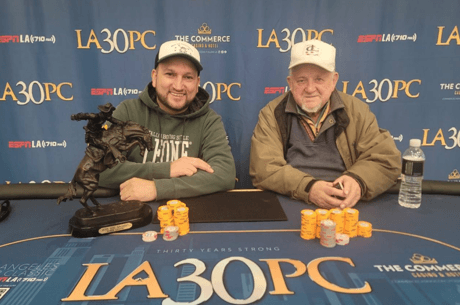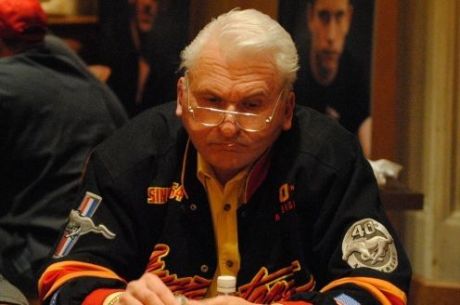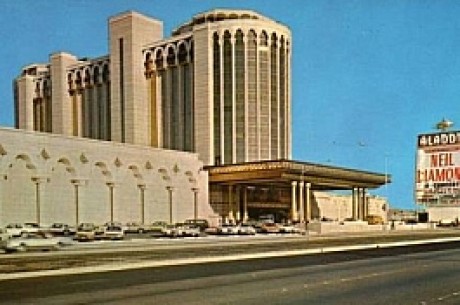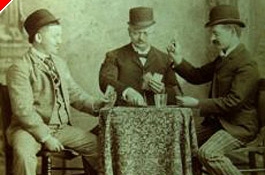From the Poker Vaults: Amarillo Slim's Super Bowl of Poker, Part I
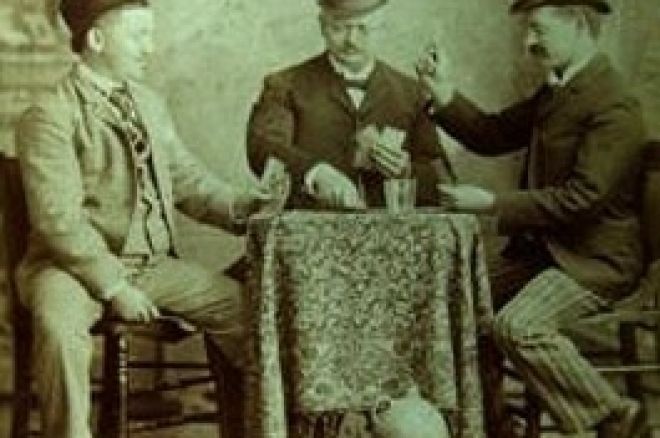
Once upon a time poker tournaments with $10,000 buy-ins were as rare as blizzards in Las Vegas. In fact, from 1972 to 1978 the main event of the World Series of Poker was the only tournament in the world that could lay claim to that distinction.
"There were no other poker tournaments going on other than the World Series of Poker," explained Mike Sexton. "That was the only [big buy-in] tournament that existed at that time."
Recognizing a potentially lucrative opportunity, "Amarillo Slim" Preston, the 1972 world champion, decided to create a new tournament in the late 1970s. He chose a name that was both eponymous and grandiose — Amarillo Slim's Super Bowl of Poker. Getting the tournament up and running was a much harder task, but he was the perfect person for the job. Among poker's most personable and charismatic players, he used every ounce of his charm, as well as a few of his connections, to get the inaugural tournament launched in February, 1979.
"The World Series of Poker was so successful that everybody wanted more than one tournament," he recalled, "so I went to Barron Hilton and had my first one at the Hilton Hotel there in Vegas."
Using the World Series' format as a model, Slim featured eleven events in his first tournament, just one fewer than would run at the WSOP three months later, and all the world's best poker players showed up to play, including such luminaries as Johnny Moss, Bobby Baldwin, Chip Reese, and Doyle Brunson.
"All the big players at the time were there," said Sexton. "Amongst the big players it was very popular. They all went."
The not-so-famous winner of that first tournament was George Huber, who had won his first gold bracelet at the World Series in 1977. He took home $150,000 for coming in first as well as a pair of $3,000 cowboy boots specially handcrafted by Slim's own boot maker. Slim continued to give these sorts of special prizes to the champion for years to come, and the gifts only grew more lavish with time.
"I gave away a DeLorean one year," he bragged. "I gave away a 1935 Auburn Boattail Speedster one year. And I gave away a Jeep, a Coleman trailer, and all the camping stuff another year."
By all accounts the tournament's debut was a success, but before a single year had passed it faced the first big hurdle of its existence. "The [Las Vegas] Hilton closed its poker room," explained Slim. "Barron put slots in there where the poker room was, so the next year I moved the tournament to the Sahara Reno."
The move to the mountains in 1980 proved to be a beneficial one for Gabe Kaplan, the erstwhile star of the television show "Welcome Back, Kotter". On the last hand of the first day of the main event, Kaplan flopped a set of sevens in a hand against Ray Zee, a high-stakes cash game player who would go on to write High-Low Split Poker, Seven-Card Stud and Omaha Eight-or-Better for Advanced Players. As happy as Kaplan was, Zee was even happier; having flopped a set of aces, he moved all in. Kaplan called and was disgusted at his ill-timed luck… until he caught the case seven on the turn. Winning that hand gave Kaplan a slight lead over Zee and Sam Moon, and he went on to win the title the next day.
In addition to the $190,000 he earned for coming in first, Kaplan took home the tournament's new trophy, a loving cup that was so enormous it made the gaudy gold bracelets given to the winners at the World Series of Poker look understated. This trophy would continue to be awarded to the winner of the main event throughout the tournament's existence.
Kaplan's victory propelled him, for a short time at least, into the upper echelon of the professional poker world. Between 1982 and 1985 he did particularly well at the Super Bowl of Poker, making four final tables and winning two events.
The Super Bowl returned to the Sahara Reno in 1981, but that would be its last year in that location. When the Hilton Hotels Corporation bought the casino and turned it into the Hilton Reno, Slim's tournament was forced to move once again, but it didn't take long for it to find a new home.
"After they sold the Sahara Reno, they had the foresight to put me with the corporate offices," Slim said, "so I took the tournament to the Sahara [Tahoe and High Sierra Resorts] in Lake Tahoe."
At this point in its existence the tournament had begun to take on the identity of its creator, a man who has been in perpetual motion for the majority of his life. Despite the many changes in locale, the tournament was able to maintain nearly the same number of events as the World Series throughout the early 1980s. Where it lagged behind was the size of its fields and, subsequently, its prize pool. While Tom McEvoy won $540,000 for winning the WSOP in 1983, Hans "Tuna" Lund only got $275,000 for his victory at the Super Bowl that year.
In an effort to make up for this disparity Slim made a point of making extremely top-heavy payouts. For the first five years of his tournament's existence he only paid the top three finishers.
"Amarillo Slim for years was the only guy who paid just three places in a tournament," said Sexton. "He paid 60 percent for first, 30 percent for second, and ten percent for third. That was his trademark."
"That's what it should be," commented Slim. "I kept it 60-30-10 until the fields got so big that you had to pay more players."
The days when its fields started rivaling those of the World Series of Poker would mark the heyday of Amarillo Slim's Super Bowl of Poker, a time that, in retrospect, was all too brief.
Editor's Note: Storms Reback co-wrote All In: The (Almost) Entirely True Story of the World Series of Poker, and collaborated with Sam Farha on Farha on Omaha: Expert Strategy for Beating Cash Games and Tournaments. His column on some of the bright moments in poker history appears weekly at Pokernews.com.


